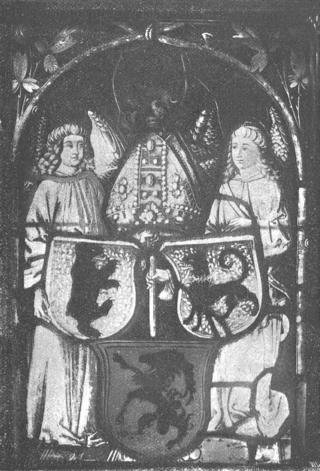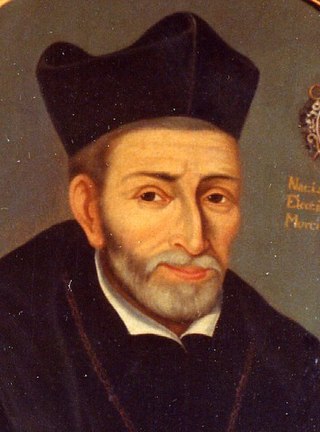Related Research Articles

The Abbey of Saint Gall is a dissolved abbey (747–1805) in a Catholic religious complex in the city of St. Gallen in Switzerland. The Carolingian-era monastery existed from 719, founded by Saint Othmar on the spot where Saint Gall had erected his hermitage. It became an independent principality between 9th and 13th centuries, and was for many centuries one of the chief Benedictine abbeys in Europe. The library of the Abbey is one of the oldest monastic libraries in the world.
Notker Physicus was a monk at the Abbey of Saint Gall, active as a physician, painter, composer and poet. He is best known for his medical prowess, and may have been physician to the Holy Roman Emperors Otto I and Otto II. His paintings, now lost, were well regarded in his time, and two of his compositions survive, a office and hymn.
Konrad von Gundelfingen was prince-abbot of the Princely Abbey of Kempten from 1284 until 1302. He was also anti-abbot of the Princely Abbey of Saint Gall from 1288 until 1291, appointed by King Rudolf I.

The St. Gallus Chapel is a chapel within the abbey complex of Saint Gall.
Bernwig was abbot of the Abbey of Saint Gall from 837 to 840/841. On 25 May 837, he was first documented as Abbot of Saint Gall. His date of birth is not known; he died on a 8 December of an unknown year.
Hartmut von St. Gallen was abbot of the Abbey of Saint Gall.
Ulrich was abbot of the Abbey of Saint Gall from 984 to 990.
Hartmann was abbot of the Benedictine Abbey of Saint Gall.
Thieto was abbot of the Benedictine Abbey of Saint Gall from 933 to 942.
Craloh was abbot of the Benedictine Abbey of Saint Gall from 942 to 958. During his time in office, the first anti-abbot was elected.
Purchart I was the abbot of the Benedictine abbey of Saint Gall from 958 until 971.
Purchart was abbot of the Abbey of Saint Gall from 1001 to 1022.
Werinhar was counter-abbot of the Abbey of Saint Gall from 1083 to 1086. Nothing is known about his life before and after his work in Saint Gall. He is documented neither in the obituary of Saint Gall nor in that of Reichenau.
Heinrich von Gundelfingen was abbot of the Abbey of Saint Gall from 1411 to 1418 when he resigned. He was the grandfather of Heinrich von Gundelfingen.
Konrad von Pegau was abbot of the Abbey of Saint Gall from 1418 to 1419.
Heinrich von Mansdorf was abbot of the Abbey of Saint Gall from 1419 to 1426.
Eglolf Blarer was abbot of the Abbey of Saint Gall from 1426 to 1442.
Georg von Wildenstein was abbot of the Abbey of Saint Gall from 1360 to 1379.

Franz von Gaisberg was librarian from 1491 to c. 1496 and abbot of the Abbey of Saint Gall from 1504 to 1529.

Pius Reher was abbot of the benedictine monastery of Saint Gall and prince-abbot of the Princely Abbey of Saint Gall from 1630 until 1654.